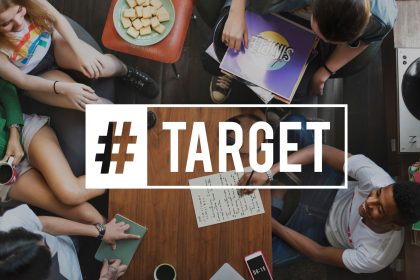Imagine you’re strolling past your favorite coffee shop, and your phone pings with a message: “Pop in now for 20% off your latte!” It feels like the store knew you were there—and in a way, it did. That’s the magic of location-based digital marketing. This clever strategy uses where you are to send ads, deals, or info that match your moment. It’s changing how businesses connect with people, making marketing feel personal and timely. In this article, we’ll explore what location-based marketing is, how it works, why it’s a game-changer, and how companies can use it to grow. Plus, we’ll back it up with real numbers to show its power.
What Is Location-Based Marketing?
At its heart, location-based marketing is about using someone’s location to send them the perfect message. It taps into tech like GPS, Wi-Fi, or even your phone’s signal to figure out where you are. Then, businesses send ads or offers straight to your device—whether it’s a phone, tablet, or laptop.
Picture this: You’re near a clothing store, and a text pops up offering 15% off jeans if you walk in right now. That’s location-based marketing doing its thing. It’s quick, it’s targeted, and it feels made just for you. This idea has been around for a while, but it’s exploded with smartphones. Today, 90% of U.S. adults own a smartphone (Pew Research Center, 2023), and most of those have location tracking. That’s a goldmine for businesses wanting to reach people on the move.
How Does It Work?
Location-based marketing relies on a few simple tools. Here’s how they come together:
- Geofencing: Think of this as an invisible boundary around a spot—like a shop or a park. When you step inside it with your phone, you might get a notification or ad. A pizza place could set a geofence to offer “$2 off a slice” when you’re nearby.
- Beacons: These are tiny gadgets in stores that talk to your phone via Bluetooth. If you’re standing by the shoe aisle, a beacon might ping you with a deal on sneakers.
- GPS: This is the tech in your phone that pinpoints your exact spot. Apps use it to track you and send ads tied to your location.
- IP Targeting: This guesses your general area—like your city—based on your internet connection and shows you relevant ads.
Businesses often use platforms like Google Ads or Facebook Ads Manager to set these up. They decide who to target—like “anyone within 2 miles of my gym”—and the tech handles the rest.
Why It’s a Big Deal
So why does this matter? Because it gets results. People respond better when an ad fits where they are. A study showed that location-based ads boost in-store visits by 20% compared to regular online ads (Statista, 2022). That’s a big win for stores wanting more foot traffic.
Timing is everything too. If you’re near a café and starving, a $3 sandwich deal beats an ad you’d scroll past at home. In fact, 80% of consumers say they’re more likely to buy when ads match their location (eMarketer, 2023). Big names like Target and McDonald’s use this to catch you at the perfect moment.
It’s not just for giants, either. Small businesses—like a local bakery—can use affordable tools to reach people nearby. It’s a way for anyone to stand out.
The Numbers Tell the Story
The stats prove this isn’t just hype. Check these out:
- Spending is soaring: U.S. businesses spent $38.7 billion on location-based ads in 2022, with projections hitting $54.5 billion by 2026 (Statista, 2023).
- People are on board: A survey found 70% of folks are fine sharing their location for better deals or services (Local Search Association, 2022).
- Sales jump: Companies using geofencing see 27% more clicks on their ads, per a study (Mobile Marketer, 2021).
These numbers show location-based marketing is a proven way to win customers and boost profits.
Real-World Wins
Here’s how some brands use it:
- Starbucks: They use geofencing in their app. Walk near a store, and you might get a “free drink with purchase” alert. It’s worked so well that their app engagement doubled after adding this trick.
- Walmart: They place beacons in stores. If you’re by the TVs, your phone might buzz with a discount. It keeps you shopping—and spending—longer.
- Uber: Location is Uber’s backbone. It tracks you to send a ride, but also pushes ads—like Uber Eats deals when you’re near a partner restaurant.
These show how versatile this strategy is, from coffee to retail to tech.
Wins for Everyone
This approach benefits both sides. For businesses, it means more sales, sharper targeting, and happier customers. They waste less on ads that flop and focus on ones that hit. For you, it’s about convenience and deals that fit. A coupon for a store you’re passing beats a random pop-up any day.
It builds loyalty too. If a yoga studio sends a “Free class today” deal when you’re close, you might try it and stick around. That personal vibe keeps you coming back.
Challenges to dodge
It’s not all smooth sailing. Here are some bumps:
- Privacy fears: Some don’t like being watched. About 60% of Americans worry about how their location data is used (Pew Research Center, 2023). Companies must be upfront and let people choose.
- Cost: Tools like geofencing or beacons can get pricey. Platforms like GeoFencing.com help, but it’s still a cost to plan for.
- Timing mistakes: An ad for lunch at midnight? That’s annoying, not helpful. Businesses need to get it right.
Being smart and respectful is key.
How to Jump In
Ready to try it? Here’s an easy start:
- Know your crowd: Where do your customers go—online and off?
- Pick a tool: Try Google My Business for free location boosts or geofencing with Bluedot.
- Make it yours: Send offers like “15% off just for being here.”
- Test it out: See what clicks and tweak it—maybe a bigger deal works better.
Start small, then scale up.
What’s Next?
This magic is just beginning. With 5G and sharper GPS, ads will get even more spot-on. Picture walking into a shop and getting a deal based on your past buys. By 2030, location-based ads could be 50% of all digital ad spending (eMarketer, 2023). That’s a massive leap.
For now, it’s already linking businesses and customers closer than ever—one perfectly timed ping at a time.
References
- eMarketer. (2023). Location-based advertising: Trends and insights for 2023. https://www.emarketer.com
- Local Search Association. (2022). Consumer attitudes toward location sharing. https://www.localsearchassociation.org
- Mobile Marketer. (2021). Geofencing drives 27% higher click-through rates. https://www.mobilemarketer.com
- Pew Research Center. (2023). Smartphone ownership and privacy concerns in the U.S. https://www.pewresearch.org
- Statista. (2022). Impact of location-based advertising on in-store visits. https://www.statista.com
- Statista. (2023). U.S. location-based advertising spending, 2022-2026. https://www.statista.com
















